Add your feed to SetSticker.com! Promote your sites and attract more customers. It costs only 100 EUROS per YEAR.
Pleasant surprises on every page! Discover new articles, displayed randomly throughout the site. Interesting content, always a click away
Pedro Pimentel - Medium
Rumblings on Coaching, Agile, Learning, Travel, Personal and Technology. Not necessarily in that order. - MediumMy Top Failures as an Agile Coach 3 Apr 2018, 7:02 am
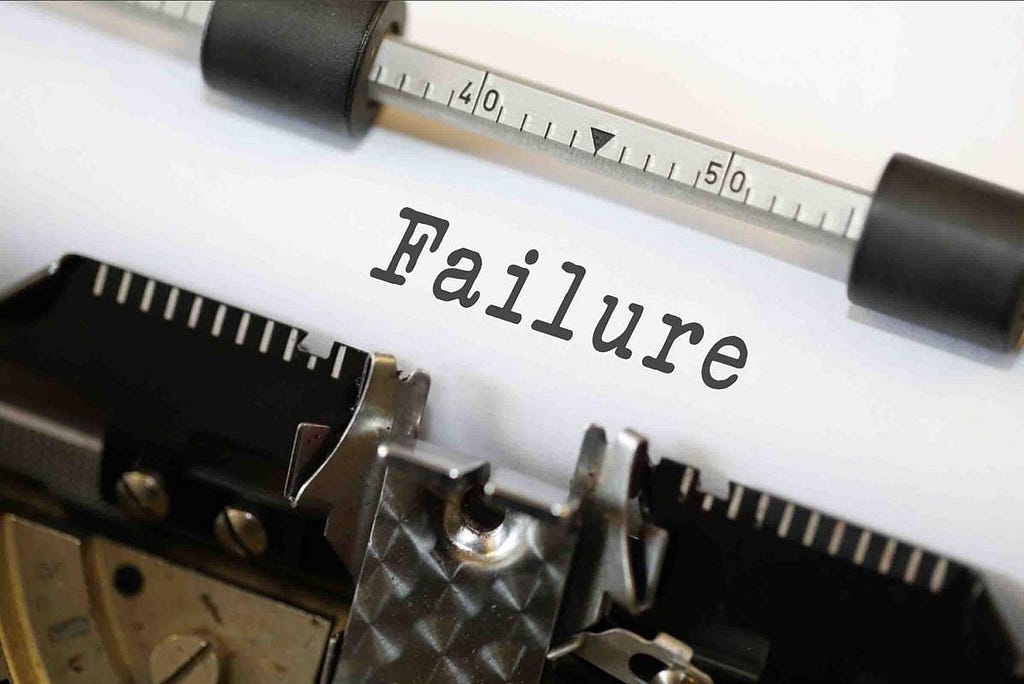
Failing is believed to be one of the best ways of learning but what happens when we can't always acknowledge easily that we are failing? Quite often, failures are somehow hidden and so small that we only notice something went wrong after these mistakes snowball into something big and harmful. An example everyone can possibly relate to: buying that ice-cream after lunch a few times a week. Although buying ice-cream might not be seen as a mistake on its own, in the long run, it can lead to negative effects on someone’s health.
It is impossible to live without failing at something, unless you live so cautiously that you might as well not have lived at all — in which case, you fail by default. — J. K. Rowling
When playing the Agile coach role at clients wanting to adopt Agile and/or change their working culture I learned the hard way that small failures often lead to catastrophic outcomes. Here you see the two main learning outcomes from small and overlooked mistakes:
Relying only on bottom-up adoption
It's quite easy to fall in the trap of believing that by only focusing coaching at team level, when teams start delivering value, top management will follow along and support Agile adoption. It happens that teams usually get stuck by organizational blockers way before they are able to start delivering meaningful value. The key learning is to not proceed with coaching until there's a minimum degree of top management engagement to effectively support the changes needed at organization level.
Agile without technical excellence
When you are passionate about what you believe, getting development teams excited about the benefits of adopting Scrum (or any other approach) is easy. The same applies when talking to developers on the benefits of technical excellence, code quality and using practices like Continuous Integration (CI), Continuous Delivery (CD), automation, and Test-Driven-Development (TDD). My small mistake is that I believed by simply organizing coding dojos, as a safe place to practice and learn those practices, the teams would pick up and passionately apply them on their daily work. What happened is that, a few months down the road, the teams were excelling at Scrum, delivering value with working software but the quality was starting to plunge, with increasing regression bugs and team's velocity trending lower and lower. The key learning here is that working in an Agile environment can be quite intense and fulfilling on its own but it's no excuse to compromise on quality, therefore, training and mentoring on software craftsmanship should be the one of the main priorities for any development team regardless of their maturity.
Have you committed the same mistakes like me? Share on the comments how you went about solving them.
My Top Failures as an Agile Coach was originally published in Pedro Pimentel on Medium, where people are continuing the conversation by highlighting and responding to this story.
Are your coaching sessions engaging? 17 Nov 2017, 2:35 am

A typical coaching session agenda can sometimes sound quite boring when you describe it to someone. Generally, a session starts with a progress review of what happened since last time coaching took place, what would be the priorities to tackle in the current session, coaching those priority items and come up with a plan for what the coachee committed to work till next meeting. This process happens with the coach and client seating for one hour or sometimes even longer. Needless to say, such monotony can wary the client as well as the coach.
Being creative on running a session makes it more engaging as the pace changes, moreover it also fosters faster learning in the coachee. Furthermore, using creative approaches can also help a stuck client to come up with more choices and possibilities. Looking at the coaching literature available, Rogers suggests coaches can use straightforward techniques, such as pausing the session to offer beverages or a quick stand-up for a body stretch exercise. Furthermore, other simple ways to intervene a session with actions such as inviting the coachee for drawing, the use of card sorts, inviting for a walk outdoors and maintaining a whiteboard in the room. However, knowing when to be creative in experimenting new things is vital as emphasised by Palmer & Whybrow saying that:
“Creativity and timing are required on the part of the coach to identify the moment to suggest or enable creative experimentation by the coachee”

Another example of being creative working towards helping the coachee to face a difficult job interview in the future, the coach might make use of visualization in the form of a role play exercise so the client can rehearse the interview safely, giving more chances for feedback on the coachee and, quite importantly, as mandated by Rogers, a way to have fun and bring laughter to the session.
Finally, for the coaches out there seeking to be more creative in their sessions and wanting to base their approach in proven academic models, one of the coaching approaches that best equips coaches with diverse techniques to facilitate change and growth is neuro-linguistic programming (NLP), requiring coaches to be creative when determining which method to use, as well as when using them. For anyone who is eager to explore and experiment different opportunities, a NLP approach is most likely to be beneficial. Begging for creativity, the base assumption of NLP is that there are no inflexible clients, only coaches who lack flexibility in adapting to the needs of the clients as concluded by Palmer & Whybrow.
How about you? Which creative techniques have you been using? When are you using them? Share in the comments below.
References:
Palmer, S. & Whybrow, A., 2007. Handbook of Coaching Psychology A Guide for Practioners. Hove: Routledge.
Rogers, J., 2008. Coaching Skills: a handbook. 2nd edition ed. Glasgow: Open University Press.
Are your coaching sessions engaging? was originally published in Pedro Pimentel on Medium, where people are continuing the conversation by highlighting and responding to this story.
Uncovering Differences between Coaching and Consulting 18 May 2017, 8:55 am
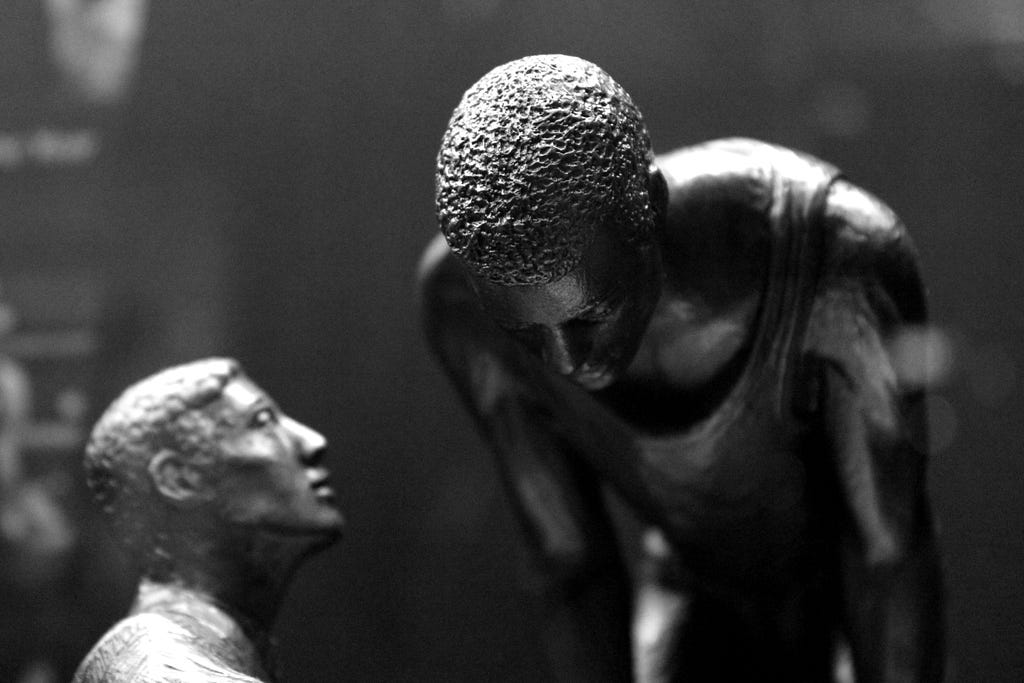
One of the main striking differences that sets apart coaching from consulting is their use of language. Whilst the former takes a non-directive approach, the latter has a quite directive slant on their utilisation of the language. It does not mean one style is better than the other, as Starr (Starr, 2008, p. 24) explains “it is important to acknowledge that a directive style has its uses and can be what is needed”. When it comes to consulting, a consultant is typically hired when there is a need for specialised skills to solve a problem where the current staff lacks the skills, knowledge and experience to accomplish the task.
Coaching can complement consulting, for example, it is often the case a company hires one or more external experts, they solve the issue and go away, only for a short while later the same issue arise back again. In case the consultants had applied coaching skills, they could effectively inflect change on the organisation to learn and sustain the new abilities used to fix the problem. Kimsey-House, et al (2011) supports coaching as a good pillar to ensure that the newly applied changes stay deep inside within the organisation. By contrast, coaching with its non-directive language approach, would not be the best technique to use when transferring basic skills (Starr, 2008). For example, explaining how a TV remote works to someone, if done with a non-directive language, and exploring the thoughts and feelings about the process as coaching does, it might not be as effective as simply explaining what each button does. Furthermore, Starr (2008) supplements that when someone has close to zero knowledge on a desired skill, a directive language can work better.
Another salient difference between coaching and consulting, as illustrated in Figure 1, is how in coaching, the coach’s focus is on asking questions, and the client is the one with the authority to come up with answers. On the other hand, in consulting, the consultant is the expert, providing the solutions. Bear in mind, Figure 1 is for illustration purposes only. By focusing on the extremes of coaching and consulting, it makes it easier to differentiate coaching from other fields (Fairley & Stout, 2003). Furthermore, as aforementioned, quite often there will be an overlap. For example, a coach switching from non-directive to directive language whenever it is deemed the right approach to apply.

When it comes to questioning, consulting tends to rely more on fact-seeking questions such as “How many hours a week this task takes?” and “Show me why this step is wrong on the workflow?” as they need to quickly get acquainted with the issue they were hired to work on. Similarly, coaching also makes use of fact-seeking questions, but seeks more than a factual answer as the recipient of the answer, the coachee, already knows it. In order to help our coachees come up with their own answers, it is important to make the coachee’s answer come up from the coach’s question (Starr, 2008). Powerful questions can achieve such outcome. These questions have several attributes in common: they refocus from problem to solution, they are part of the coachee’s agenda, they demand honesty, and they can make a problem feel like an opportunity to name a few (Rogers, 2008) (Starr, 2008). Not to mention that with powerful questions, they instil deeper responses, bringing feelings and thoughts to the conversation. In contrast, in consulting, there aren’t reasons to dig deeper in emotions as they would possibly come out in the way of understanding the issue, distracting the consultant from what he is been assigned to execute.
Whereas consulting explicitly requires existing domain expertise and problem solving capabilities, coaching does not require any. Although, as aforesaid, it may enhance the questioning, a coach does not need to comprehend the whole situation to work effectively. In addition, the more we know about a subject, the more likely we will try to give advice or become attached to the coachee’s outcome (Rogers, 2008).
Moreover, Starr (2008, p. 336) states with clarity and brevity, the contrasting polarity between coaching and consulting, placing the coachee as an expert, highly capable, and empowered person:
Coaching is based on the principle that an individual is ultimately responsible for their lives and the results they’re getting. If we acknowledge that we are responsible for something, it follows that we have power and influence over it…What a coach will not do is instruct you to go and do something specific, or go and do it for you. If they did, the coach would be taking responsibility — and so power — away from you.
In contrast, in consulting, the approach traditionally takes the ownership away from the client, and the client’s problem becomes the consultant’s responsibility. Responsibility usually bound by contracts with severe penalties in case of delays or having the work deemed incomplete. Coachees or the organisations hiring coaches also have a concern on how to measure coaching. A coach can request immediate feedback after a session although this information will be useful only for the coach, not directly useful for the coachee or the organisation. For example, the coachee might have hated the session but made remarkable changes in what they do. On the other hand, the client might have appreciated the coaching but didn’t change anything in their behaviour (Rogers, 2008).
The way coaching works makes it difficult to measure as the person effectively changing is the coachee, not the coach. The fact that coaching is still mostly an unregulated industry, without a way to properly assess coaches, does not help. However, there are a few practices coaches can use to report their effectiveness to whoever is hiring them: ensuring goal-setting process gets enough time in every session, making coach goals measurable, link business results with the relationship and skill issues, always ask for feedback, and look for ways to integrate feedback loops from the start (Rogers, 2008, p. 227).
Share your experience!
What are your thoughts on measuring Coaching performance for an organisation?
Any other contrasting points between Coaching and Consulting?
Do you believe Coaching should be a regulated profession?
Footnotes:
[1] Adapted from Fairley & Stout (2003, p. 30).
Bibliography:
Rogers, J., 2008. Coaching Skills: a handbook. 2nd edition ed. Glasgow: Open University Press.
Uncovering Differences between Coaching and Consulting was originally published in Pedro Pimentel on Medium, where people are continuing the conversation by highlighting and responding to this story.
The Path to Continuous Delivery — Video 25 Apr 2017, 1:35 pm
The Path to Continuous Delivery — Video

Although I have presented at quite a few conferences and community meetups in the past, I rarely got the chance to have my talk recorded.
Here I share an impromptu talk at last year's Agile Tour Hong Kong on the topic of what I believe are the foundations on where to build your journey to Continuous Delivery. Thanks to Steven Mak for accepting to be my co-speaker within 1 hour of delivering the talk.
Enjoy the talk with all the <irony>beauty</irony> of my en_PT-BR (English with Brazilian Portuguese) accent.
You can get the slides from speakerdeck.
https://medium.com/media/048430c79df76a0d10df0deadeab6010/hrefLet me know what you think in the comments.
The Path to Continuous Delivery — Video was originally published in Pedro Pimentel on Medium, where people are continuing the conversation by highlighting and responding to this story.
My 2016 in review 2 Jan 2017, 8:06 am

I wouldn't say 2016 was a breeze but it turned out to be a good year in overall. Here are some of the highlights I wanted to share with you:
Community
I was lucky enough to have plenty of time to engage with different types of community work. I helped organising Hong Kong CodeConf, the annual software conference for local developers, with Matthew, Charis and Stig. The event, which happened in October at the top of ICC and had about 200 attendees, turned out to be a great success after the initial stress of arranging a relatively big event for someone who never had organised anything bigger than a 10 friends trip before.
As a speaker, I presented 3 talks in 2 different events. At January’s Codeaholics, I spoke about “Delivering Software and Infrastructure to ships” and at Agile Tour HK, I shared my studies and little experience on liminal thinking with the talk “Agility is Unsettling”. At Agile Tour, as one of the speakers was missing, I happened to present another talk on “The Path to Continuous Delivery”, the same one I delivered at Hong Kong Code Conf 2015.
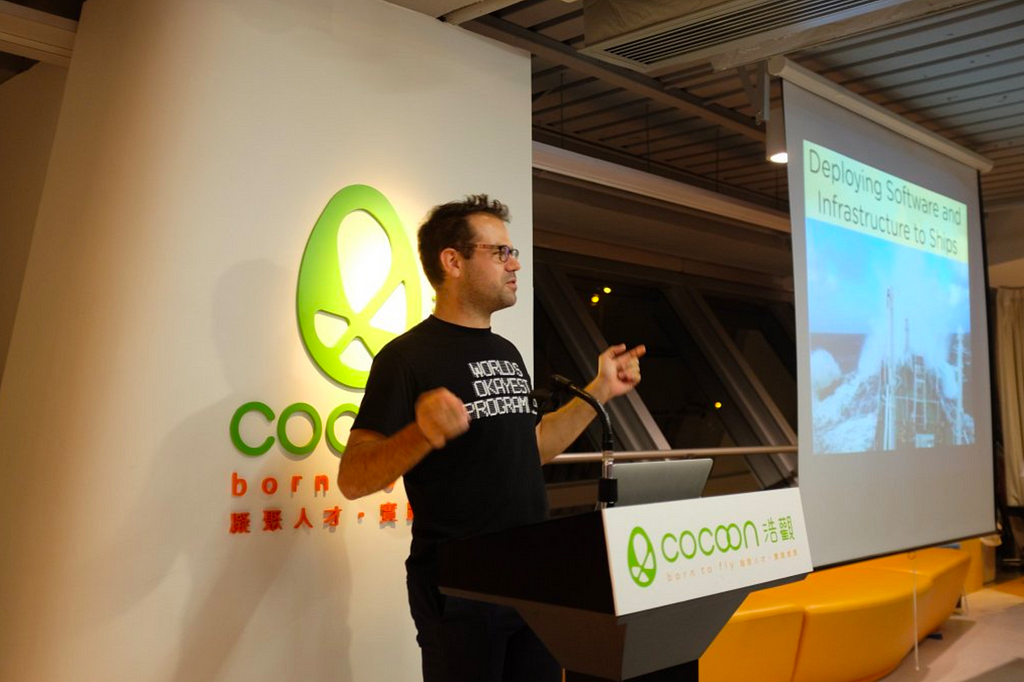
I was also involved in writing the first bid book for Gay Games Hong Kong to be (possibly) hosted in 2022. It was a humongous group effort to put together more than 300 pages including the chapter I was responsible for, the Information Systems plan, detailing which systems we would use and how the team will run the IT and infrastructure for the games. More info and the bid book itself can be found on the Gay Games HK 2022 website.
On top of that, I was also organising several outdoor/sports events for “Out in HK”, a LGBT group for outdoor and sports lovers. The main event I did was sailing through the remote islands of Palawan, Philippines where the 10 of us ventured out of our comfort zones for 6 days without electricity and sleeping on tents. Other than that, I also organised the usual night Twins hike, where we only cover 5km but with a big variation in elevation and lots of steps.
Reading
I was able to read, and finish, only 10 books. On a side note, I started reading Structure and Interpretation of Computer Programs back in 2015 and doing the exercises in LISP along the way, I knew it would take long but never imagined it would be more than one year. It doesn't help the fact I haven't looked at the book since March 2016. You can notice most of the books themes are about knowing oneself better and leading IT.
- When Cultures Collide: Leading Across Cultures
- Liminal Thinking: Create the Change you Want by Changing the Way you Think
- Leading IT: Still the Toughest Job in the World
- Good to Great: Why Some Companies Make the Leap … and Others Don’t
- Don’t Waste your Talent: The 8 Critical Steps to Discovering What you do Best
- Agile IT Organisation Design: For Digital Transformation and Continuous Delivery
- The Do Guide
- These Days
- Agile Coaching (reread)
- Nemesis: The Hunt for Brazil's Most Wanted Criminal
- Universal Principles of Design (unfinished)
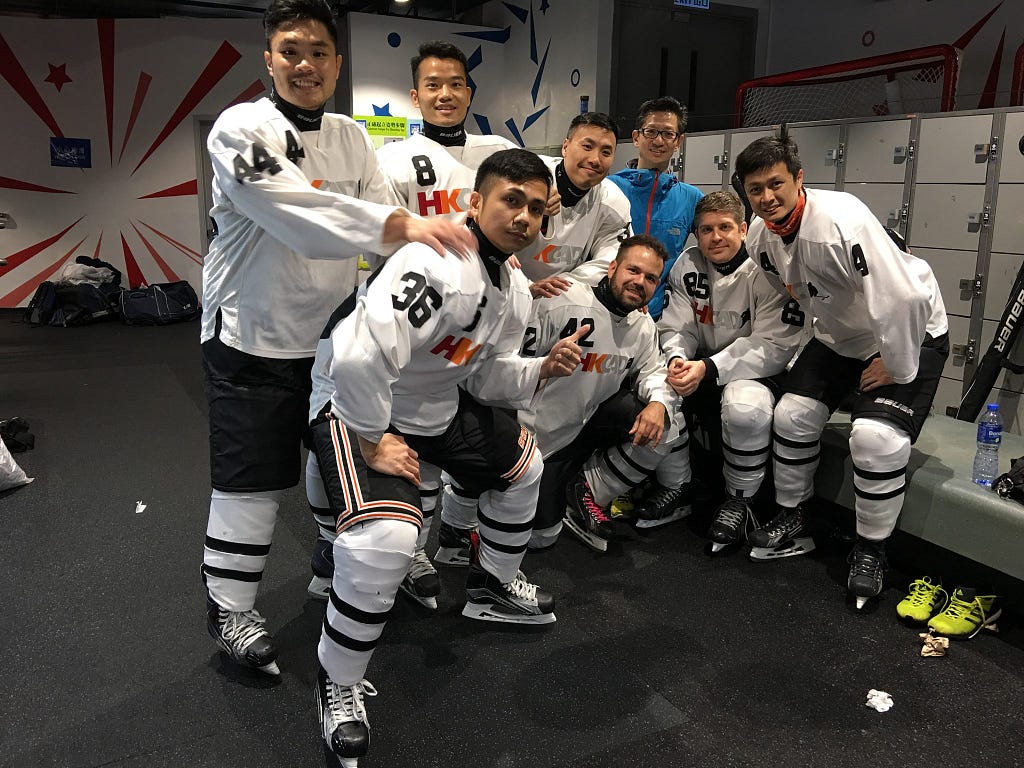
Sports
My ice hockey skills kept improving. I was able to hit slap shots quite well most of the time, finding my spot on ice fairly better, even played as a goalie for the first time and scored a few goals during the winter league. On the not so good side, I gradually reduced, from 3-4 times practices a week, to once a week and ended up stopping playing in August to focus on trail running skills for the winter races. I definitely will return to the ice in 2017.
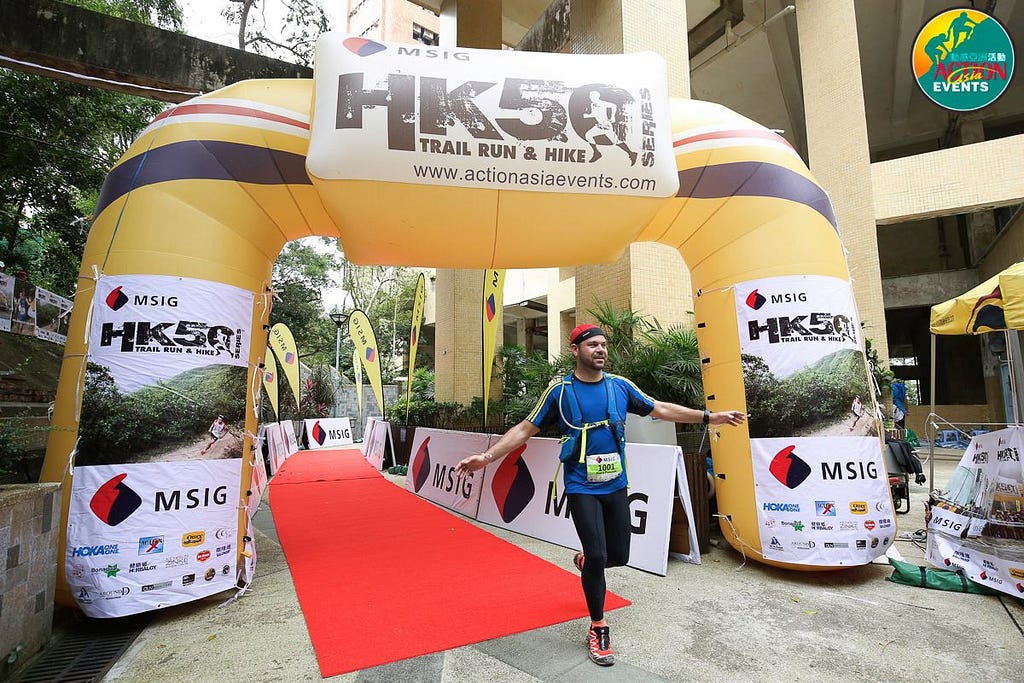
On trail running, between training and actual races, I ran over 350km with more than 19km elevation gain. I completed a few trail running races, the shortest one being 21km and the longest one 54km. As expected, there’s always something negative; my right ankle is constantly causing me problems and for 2017 I really need to focus on healing it properly. As part of my trail running goals, I need to get ready for a possible UTMB in Chamonix 2018/2019.

Travel
It was a good year in terms of traveling. I was able to visit 2 countries for the first time (Russia and Taiwan).
This is the list in chronological order:
- Philippines: Manila & Tagaytay
- Philippines: Palawan, Coron, Cebu & Bohol
- Macau for Easter
- Japan: Tokyo, Kamakura, Hakone & Yokohama
- Russia: Moscow
- Singapore
- Thailand: Bangkok
- Singapore (again)
- South Korea: Seoul
- Macau (again) with family
- Taiwan: Taipei, Jiufen, Houtong, Taichung, Kaohsiung & Tainan
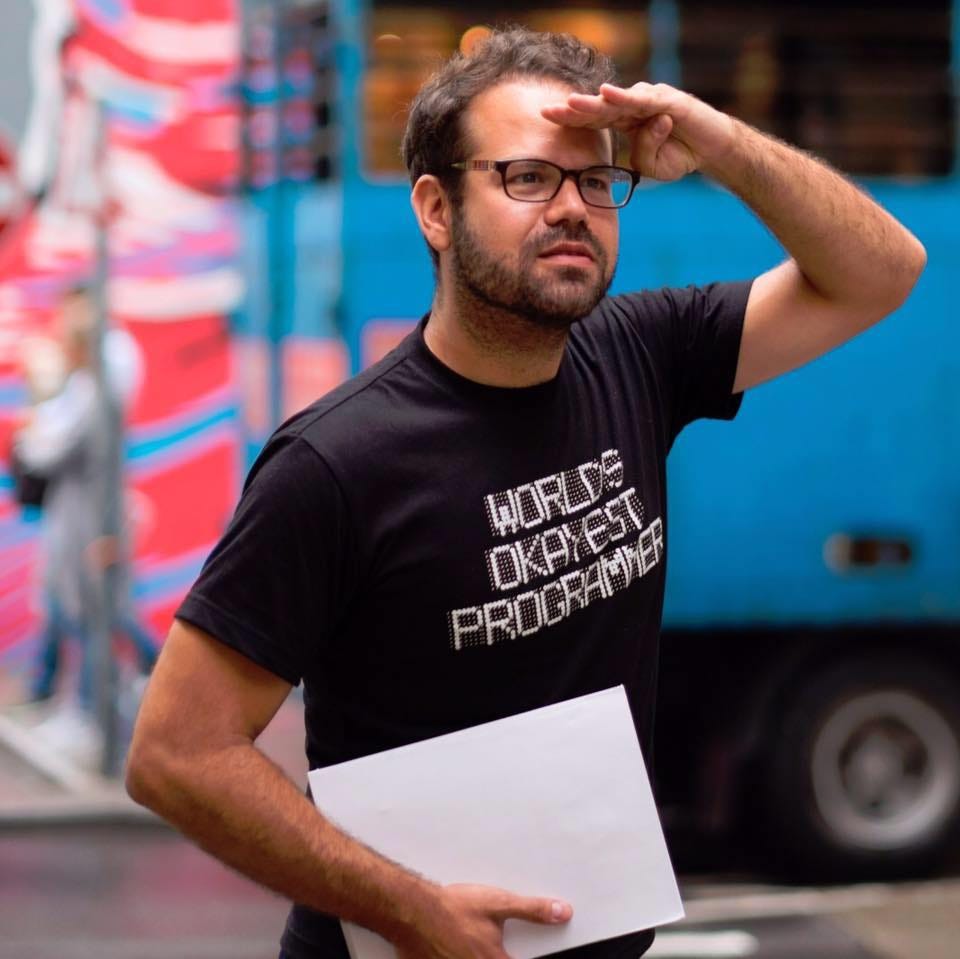
Personal / Professional
Back in March, myself and a few other colleagues got laid-off due to our company’s restructuring. Actually, It wasn’t much of a surprise for us, we knew it was coming, since the previous CIO left the company, but we didn’t know it would come that fast. I honestly needed that kick in my butt, I was too comfortable at that position. Unemployed, what for most people is a reason to fall into despair, I took it as a great opportunity to really look for something worth doing and more apt to my skills.
I decided to hire a career coach. As I already expected, after two sessions and a series of tests, I didn’t get hard any answers from the coach. What I got was a better understanding of myself, on what I’m theoretically better doing, my strengths for different types of work, the kind of environment I perform better and even my best learning approaches.
After those sessions and tests, I realised I have a natural ease working with groups of people. I finally could understand why I was unhappy/unfulfilled while working alone in most of my projects in my career. It’s not that I didn’t like software development on its own, it’s just I don’t perform the same as a lone wolf.
Combining current job offerings in Hong Kong with my skills on an environment I could perform better was a challenge on its own. I knew that searching jobs on job search platforms wouldn’t work for me so I resorted to my network of friends and former co-workers. That’s how I ended up finding my current role as an Agile coach at Why Innovation with a team that appreciates and shares great similarities on the way I like to work :)
On a more personal side, on April 1st (really), my partner officially moved in together. In October, my family visited me for the 3rd time while I’m already counting more than 4 years living in Hong Kong.
How about you? How was your 2016?
My 2016 in review was originally published in Pedro Pimentel on Medium, where people are continuing the conversation by highlighting and responding to this story.
Coaching the Uncoachable — The "yes, but" type 23 Nov 2016, 8:43 am

As part of my routine as a coach, I often have to deal with different kinds of resistance. Over the coming weeks, I aim to aggregate the different types of resistance traits I have encountered so far. Furthermore, you will learn most, if not all, of my trial-and-error approaches to overcome coaching/change resistance. Certainly you can find proper research of the types I mention here but this series of blog posts also works as a reminder to myself :)
List of resistance types I have seen so far:
- The “there’s no problem” type
- Something or someone else is the problem
- The “yes but” person
- Overly sensitive, taking it personal
- Doesn’t take directions well / Doesn’t understand what you say
- Bad memories from coaching
- The too busy to change
Bear in mind that everything I suggested here is strongly dependent on the context of your coaching engagement at the team and individual levels. At the end of the day, it’s up to your own judgement to try them with your coachees. Remember, there’s no silver bullet :)

The “yes but” person
When we first encounter this type of personality, we feel she’s actually quite open and committed to change. After one or few interactions with her, you realise that on top of nodding in agreement to everything you say, you start noticing a pattern. She’s consistently pushing back all suggestions, usually with quite convincing counter-arguments. An example I faced; on a quite busy team, she was the project manager, we (coaches) are starting to introduce the team to Scrum ceremonies and associated practices and she might say:
I think it’s a great idea having a white-board to reflect our workflow and track ticket’s progress but we are already using an online system for that so I don’t want my team to waste time in keeping two different things up to date.
Depending on the person, she might be quite articulated with the “but” part of it. Opposed to the “i’m too busy” person, this type of individual wants to show they are actually aware and understanding of what we coaches suggest (or at least pretending well). Setting Imaginary (or real) constraints aside, it seems they would gladly follow our suggestion. We shall pay close attention to her answers as we work on identifying whether the argument she’s bringing is a constructive critique or simply a well elaborated excuse to avoid change.
I really appreciate your suggestion but…

Some actions I have tried with this kind of personality are:
Change the reality, work on the perception later
Quite often is much easier to simply go ahead and change the reality rather than start changing the perception of someone. From my own example above, even though I tried setting up the board and leaving up for the team to update, they were still coming up with ‘but’ reasons to not use the white-board. In that situation, what I did was to keep the board updated myself for a couple of days, till I got moments where people (both team members and stakeholders) were staring at the board and I’d approach them asking if it was useful for them to get such information, I then proceeded to make use of the board for every team discussion and making sure to relate to items in progress or blocked and asking them to keep it updated. In less than a month, the team got used to update the board and making use of it.
Help remove any impediments
Imaginary and real blockers are part of any team becoming more Agile. As an outsider, and furthermore as a coach, we tend to question and go deeper on why things are done in certain ways. With that approach, we are able to identify most of the blockers that the team might be using as an excuse to avoid change. Those are relatively easy to work on. For example, the team relying on application security scans from other teams/vendors; we can show that they can scan themselves their code against vulnerabilities (and fix any issues right away) without having to wait for a big and possibly expensive hand-off later on.
Tell a story
As much as people like to rely on facts to believe on something, it’s not without a good story-telling that you are going to be able to influence someone. In the past, I have tried convincing developers to apply TDD by using data from previous projects, white-papers about it, blog posts and books. As expected, It didn’t work in most of the cases. If they cannot resonate the content with their reality by themselves, we know they won’t dig further on using it. In that situation, you can still use use hard-facts but trying to tie them your own personal story. Make it personal.
The main thing I want you to remember is:
To change, is to change twice: the reality and perception.
Have you encountered this type of resistance before? How did you solve it? Leave your comment with your approach and let’s discuss :)
Coaching the Uncoachable — The "yes, but" type was originally published in Pedro Pimentel on Medium, where people are continuing the conversation by highlighting and responding to this story.
Keeping Track of What You Learn 19 Aug 2016, 7:22 am

Hello everyone, my name is Pedro and I’m an information addict.
I’m always reading books, checking out news, following a few hundred blogs, following another few hundred people on twitter, checking my Facebook stream and this list just goes on as new services are constantly being launched and trying to get my attention.
If you are reading this, I bet you do the same.
How to keep yourself updated or actually learn something with all the information we are throw at everyday? It’s not humanely possible to keep track of everything read/watch/listen. If you are like me, you probably follow hundreds of information sources, mostly online. On top of that humongous amount of data, we also read books, attend conferences and meet new people. We are literally bloated by information from all sides.
Managing to digest the huge amounts of information we face.
As you might expected, there’s no Silver Bullet. Everybody seems to have their own approach when it comes to learning. Some prefer to take notes while reading, others prefer to record audio snippets, some like to create songs that resemble the information, (name your method here), some like doing pet projects. I happen to have my own technique (probably not originally mine) but since it’s being quite useful to me I believe it's worth sharing.
Once I read somewhere a good analogy about how we store information in our brain: we have two “databases” in our brain. One is the short-term memory database and the other is the long-term one. When we read something, every piece of information goes to our short-term memory which is something like a “heap” of unclassified data. As this “database” is not yet classified, our brain doesn’t know when/if that information will be useful or not. Later on, it can be even within 10 minutes or less, when we try to recall some information from it, we may not be able to easily do it because that data isn’t “categorized” yet.
How many times happened to you that you remembered something just a few hours later while doing something else?
That happens because our memory searching process is asynchronous. It means your brain is still learning the subject even after you stopped thinking about it. It's like putting food to cook on your microwave, you can even forget that is there but you will be reminded later by bell. We don't have a bell in our brains so the problem is you need to constantly remember (study) that subject in order to transfer it to your long-term memory. Now the trick question:
How to remember to remember?
You can achieve that by keeping something I like to call learning log. I’ve tried many tools to help me keep track of what I'm learning. For instance, a simple text editor, a mobile app like Pocket, Evernote or even a good old notebook. You just need to ensure you have quick and easy access to it everywhere. As I’m always checking my learning logs, I keep remembering the subjects I have demonstrated interest before. Most of those things are are shortcuts to blog posts, interviews, podcasts, which I may have read/listened only once that I eventually want to follow up. But most of the times, just the fact I’m recalling the title of an article, it helps me to internally recall the content I read before from that source. In case I don’t remember what that content was about I just go there again and skim the text to get the general idea. If even doing so, I don’t understand the content, then I mark it to read it later using Pocket/Evernote/Twitter favourites.
So now you have a sh*t load of information on your learning log.
What happens when my learning log stack is getting excessively big? Just use your common sense! If you get to the point where you always need to recall every item in your list, something is wrong! How many items should you have in your learning log? It varies from person to person. In my personal case I found 10 to be a good size. It doesn’t mean I need to learn all 10 items and them move to the next 10 items. Some items can be in your list for a relatively long time, it’s strongly dependent on how complex is the subject, how fast you can learn and your priorities.
Am I done?
Mark an item as “learned” is quite subjective. My “learned” definition is that when I get to the point I can comfortably explain the subject to someone else and answer their questions right away without googling. Setting a time constraint can help as well, like imposing yourself a 15 days limit for the items in your list.
How do you manage your learning? Share your thoughts!
Keeping Track of What You Learn was originally published in Pedro Pimentel on Medium, where people are continuing the conversation by highlighting and responding to this story.
Coaching the Uncoachable — The Too Busy To change Type 19 Aug 2016, 7:21 am

As part of my routine as a coach, I often have to deal with different kinds of resistance. Over the coming weeks, I aim to aggregate the different types of resistance traits I have encountered so far. Furthermore, you will learn most, if not all, of my trial-and-error approaches to overcome coaching/change resistance. Certainly you can find proper research of the types I mention here but this series of blog posts also works as a reminder to myself :)
List of resistance types I have seen so far:
- The “there’s no problem” type
- Something or someone else is the problem
- The “yes but” person
- Overly sensitive, taking it personal
- Doesn’t take directions well / Doesn’t understand what you say
- Bad memories from coaching
- The too busy to change
Bear in mind that everything I suggested here is strongly dependent on the context of your coaching engagement at the team and individual levels. At the end of the day, it’s up to your own judgement to try them with your coachees. Remember, there’s no silver bullet :)
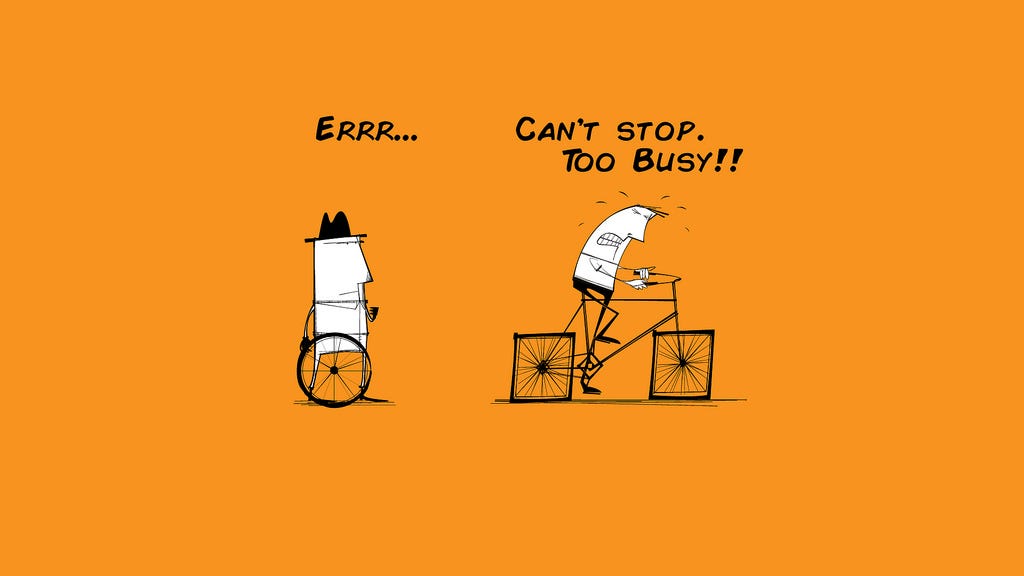
The Too Busy to Change Type
The most common trait of this kind of individual is how they vindicate all of their time to focus on their work and related activities. When dealing with this type of person, besides hearing the common mantra of “I’m too busy” every time you start a conversation with them, you will probably face other supporting statements. Some declarations can be quite concrete like “I have a deadline at the end of the week” while others might be more abstract, requiring further investigation, such as “I’m swamped by work, I don’t even have time for my family”.
“I have a deadline at the end of the week”
As a Coach, we should be able to discern whether your coachee is actually overloaded. In case you are still learning to identify whether someone's overwhelmed at work, I recommend you read this excellent blog post from Psychology Today.
In case your coachee is actually overloaded, your approach is to work with his peers and managers to alleviate his workload. Your coaching time with him might still be part of his schedule but your coaching approach with that individual shall adapt in order not to introduce even more strains on his routine.
“I’m swamped by work, I don’t even have time for my family”

If your coachee is apparently pretending to be busy to avoid changes or even just procrastinating, here are a few things we can try to get a ahold of their attention and effort:
- if your team is having standups, announce to the team that you plan to work (coach) with that busy person today. He might claim he’s not available or still deflect his engagement throughout the day, however you are making him accountable in front of everyone for not accepting your coaching. Not that the others will closely observe, but it will unconsciously influence him to make time for coaching.
- Invite him for lunch, brown bag lunch at the office or even a happy hour after work. Connect at a personal level, ask about issues he’s facing at work. Don’t let the conversation move to what you as a coach can help if he doesn’t ask. Yet, don’t be just a listener, share your own experience whenever it’s possible. When your coachee realises you also experienced the same or similar pain before, their trust on you significantly increases. Once you get ahold of his problems, work together with him or even separately to fix one or more of his issues. Make him notice you are there to help and not simply dictate him what to do.
- Lastly, you can opt to escalate the issue: get her line-manager buy-in to focus in improvements. Point out issues you observed, make sure you both agree on an engagement target, let’s say, 20–30% of the coachee time, 2 mornings per week or anything that’s reasonable and make sure you document all your activities with the coachee so in case her line-manager asks how much time you are spending with her, you have your work log to back it up.
Have you encountered this type of resistance before? How did you solve it? Leave your comment with your approach and let's discuss :)
Coaching the Uncoachable — The Too Busy To change Type was originally published in Pedro Pimentel on Medium, where people are continuing the conversation by highlighting and responding to this story.